Autofill From Browser Extensions
tip
If your browser extension is having issues autofilling usernames and passwords for a particular site, using linked custom fields can force an autofill.
Additionally, basic authentication prompts work a little differently than regular autofills. For more information, see Basic Auth Prompts.
There are lots of ways to autofill credentials with Bitwarden browser extensions! The basic method is to open the Bitwarden browser extension while you're on the website's login page and, in the Vault tab, select the Fill button for the suggested item:

Note that, when you have logins saved for a website you're trying to log in to, Bitwarden browser extensions will overlay a notification bubble reporting the number of logins you have for that website. Those items will appear at the top of your Autofill suggestions. You can filter what will appear in the suggestions and what's displayed in the All items list using the filter dropdown menus, which can be shown or hidden using the button:

tip
If you want, you can hide the badge counter using a the Show number of login autofill suggestions on extension icon toggle in the Settings → Appearance menu.
Selecting the Fill button will autofill information to the detected input fields. In cases where a web page or service has multiple items with relevant URIs, Bitwarden will always autofill the last-used login.
Customizing autofill behavior
Click items to autofill
Instead of the Fill button, you can setup your browser extension to auto-fill on selecting the vault item itself. To activate this option, navigating to Settings → Appearance and toggle the Click items in autofill suggestion to fill option on.
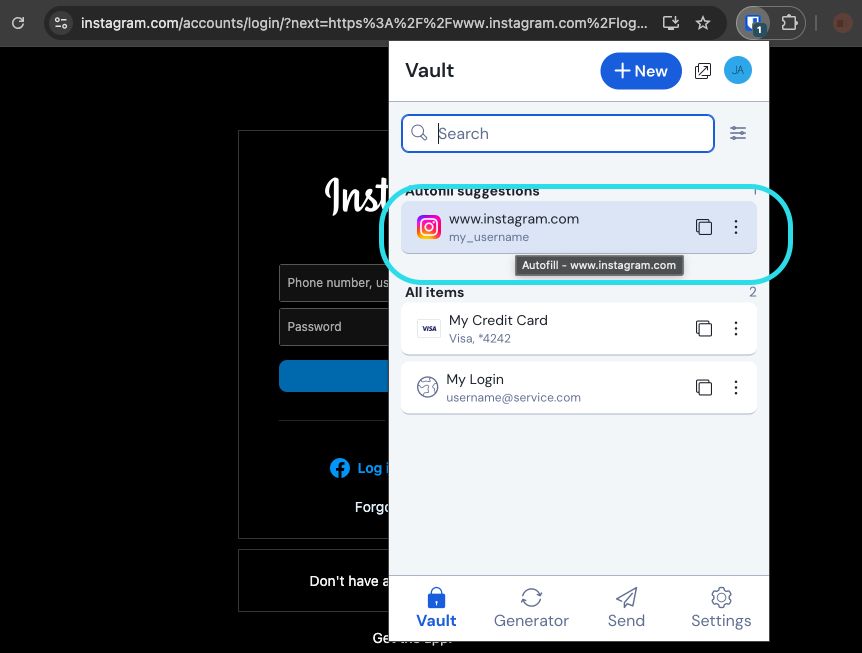
When activated, selecting the item card from the Vault view will autofill the item instead of the Fill button, and the options menu can be used to View the item.
Quick copy actions
In addition to the Fill button, you can use three quick copy action buttons on the Vault tab to specifically copy your username, password, or verification code to the clipboard:
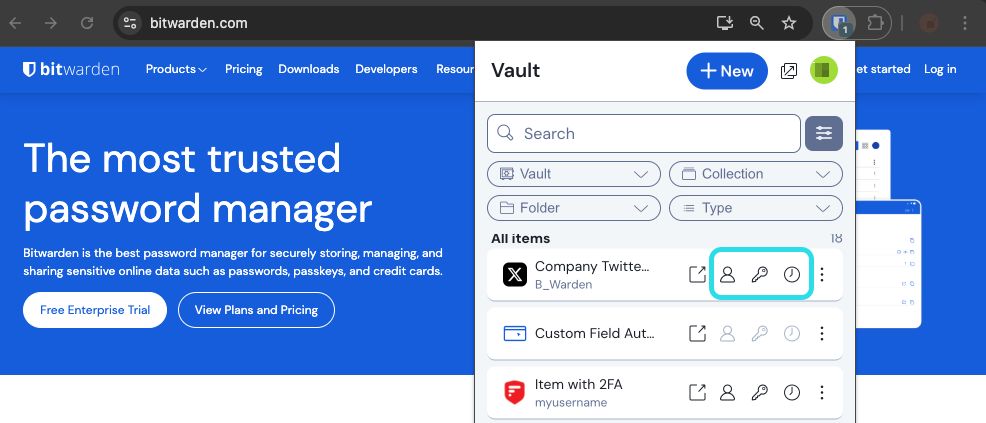
The option to show these buttons is off by default and can be activated by navigating to Settings → Appearance and toggling the Show quick copy actions on Vault option on.
Use the inline autofill menu to quickly input login credentials, passkeys, and TOTP codes from your Bitwarden vault.
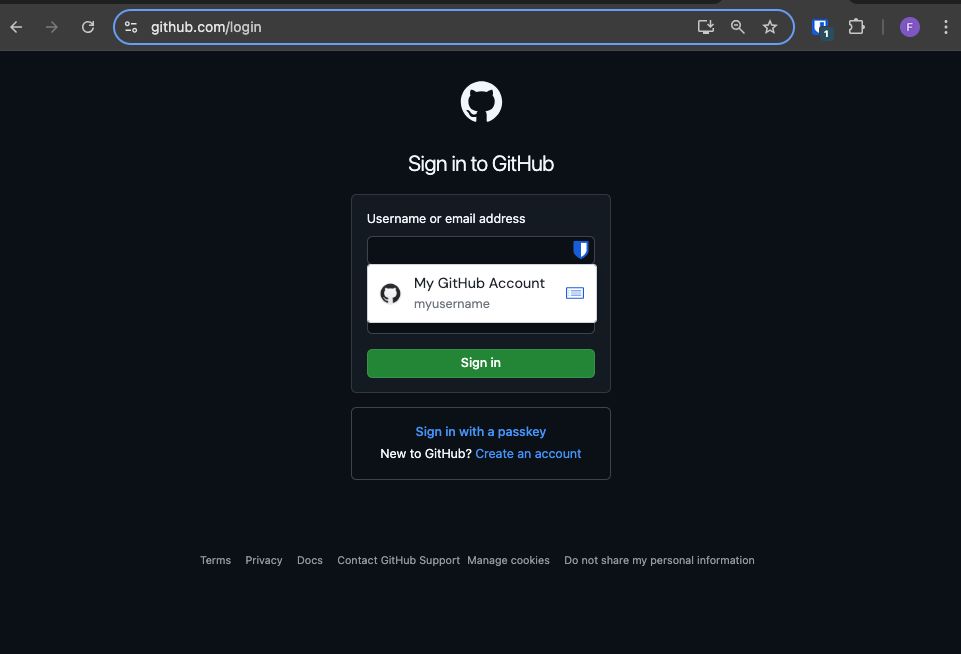
To enable the inline autofill menu:
Log in and unlock the Bitwarden browser extension.
Select Settings → Autofill, then locate the Show autofill suggestions on form fields dropdown. Select your preferred autofill menu behavior.
You can also toggle the Display identities as suggestions and Display cards as suggestions options on if you'd like the inline autofill menu to suggest these item types. Learn more here.
Next, we recommend you disable your browser's autofill option. If your browser's autofill functionality is enabled, you may experience conflicts with the Bitwarden autofill menu. Learn more here.
Chrome and Brave users may check the Override browser autofill settings option to disable their browser autofill.
To log in to an account using the inline autofill menu:
Select the login form's username field. If your vault is locked when you attempt this, the menu will prompt you to unlock the vault.
The inline autofill menu will display. When it does, select the login or passkey you wish to use for the website.
note
Don't see the login credentials you would like to use? Edit the vault item and select Autofill and save, or manually enter the website in the URI field.
If no credentials have been saved for this site, select New item, the browser extension will open to a new item where you can save new login credentials.

Autofill create item Browser extensions will warn users before using this method to autofill an untrusted iframe or an HTTP site when HTTPS is expected based on that item's saved URI(s).
note
If the inline autofill menu is causing unintended interference with your browser, it can be closed by pressing the Esc key.
note
Currently unavailable in the Safari browser extension.
Without opening your browser extension, you can right-click on an input field and use the Bitwarden → Autofill option. If your vault is locked when you attempt this, a window will open prompting you to unlock. Once unlocked, the browser extension will automatically proceed with autofilling your username, password, card, or identity.

Browser extensions will warn users before using this method to autofill an untrusted iframe or on an HTTP site when HTTPS is expected based on that item's saved URI(s).
Keyboard shortcuts
Bitwarden browser extensions provide a set of keyboard shortcuts (also known as hot keys) to autofill login information. If your vault is locked when you attempt this, a window will open prompting you to unlock. Once unlocked, the browser extension will automatically proceed with autofilling your credentials.
Browser extensions will warn users before using this method to autofill an untrusted iframe or on an HTTP site when HTTPS is expected based on that item's saved URI(s).
To autofill login information, use the following default shortcuts. If there are multiple logins with the detected URI, the last-used login will be used for the autofill operation. You can cycle through multiple logins by repeatedly using the keyboard shortcut:
On Windows:
Ctrl + Shift + LOn macOS:
Cmd + Shift + LOn Linux:
Ctrl + Shift + L
tip
If a login uses the Bitwarden authenticator for TOTPs, using the Cmd/Ctrl + Shift + L will automatically copy your TOTP to your clipboard after autofilling. All you have to do is Cmd/Ctrl + V to paste!
If any given shortcut doesn't work, it might be because another app on your device is already registered to use it. For example, the autofill shortcut on Windows is commonly claimed by the AMD Radeon Adrenaline software (AMD graphic drivers) and therefore cannot be used by Bitwarden. In these instances, you should free up the shortcut or configure Bitwarden to use a different shortcut.
Configuring keyboard shortcuts
Configuring the keyboard shortcuts used by a Bitwarden browser extension differs based on which browser you are using. To access the configuration menu:
In Chrome, enter
chrome://extensions/shortcutsin the address bar.In Chromium-based browsers such as Brave, substitute
chromefor the relevant browser name (for example,brave://extensions/shortcuts).In Firefox, enter
about:addonsin the address bar, select the Gear icon next to Manage Your Extensions, and select Manage Extension Shortcuts from the dropdown.
Some browsers, including Safari and legacy Edge do not currently support changing the default keyboard shortcuts for extensions.
Drag and fill username & passwords
The browser extension and desktop apps include a feature to drag the username and password fields into a website's login form to fill credentials:
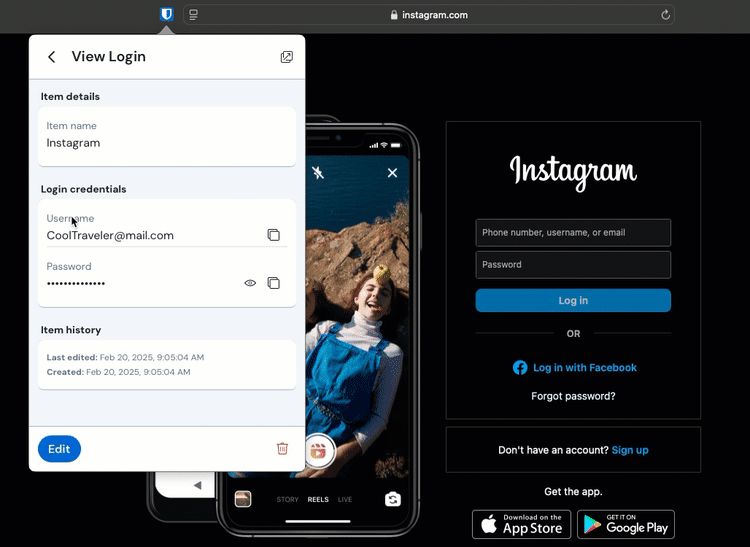
To drag and fill credentials:
Hover your cursor over the Username or Password field on the Bitwarden browser extension or desktop app.

Hover username or password Once the icon appears, drag the field into the desired login form.
On page load
warning
This feature is disabled by default because, while generally safe, compromised or untrusted websites could take advantage of this to steal credentials.
Browser extensions will not allow autofill on page load for untrusted iframes and will warn users before auto-filling on an HTTP site when HTTPS is expected based on that item's saved URI(s).
Autofill on page load is an opt-in feature (see the preceding Warning) offered by Bitwarden browser extensions. Autofill on page load will autofill login information when a web page corresponding to a login's URI value loads. Once enabled, you can set the default behavior (on for all items or off for items).
To enable this feature, navigate to Settings → Autofill in your browser extension, check on the Autofill on page load checkbox, and choose your default behavior. Once enabled and the default behavior is set, you can additionally specify autofill on page load behavior for each individual login:
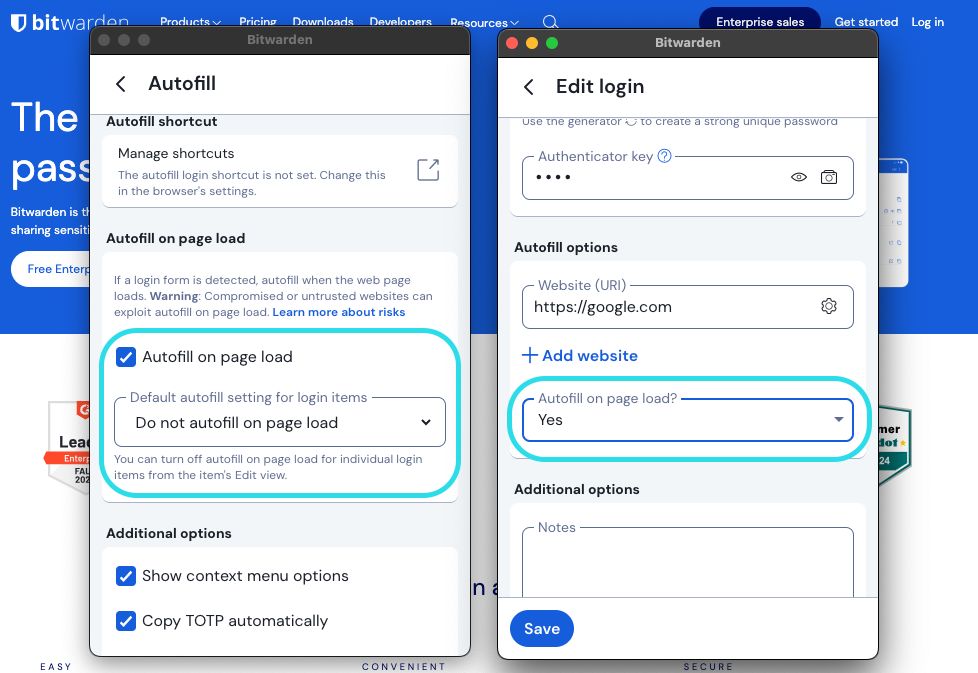
Using this convention, you can setup your browser extension to, for example:
Autofill on page load for only a select few items (off by default for all items and manually turned on for select items).
Autofill on page for all but a select few items (on by default for all items and manually turned off for select items).
Manually autofill
You can autofill items manually that don't have saved URIs by opening them in the Vaults view, and selecting the Fill button.
Browser extensions will warn users before using this method to autofill an untrusted iframe or on an HTTP site when HTTPS is expected based on that item's saved URI(s).
TOTP autofill
If you use Bitwarden authenticator, browser extensions will autofill your TOTP code provided that you're using the context menu, keyboard shortcuts, or manually autofilling. You may also use the inline autofill menu for TOTP codes. Browser extensions will not autofill your TOTP code if you're using autofill on page load.
By default, your TOTP will also be copied to the clipboard when a login is autofilled. This is the recommended workflow if you're using autofill on page load.
tip
Automatic TOTP copying can be turned off on browser extensions using Settings → Autofill → Copy TOTP automatically, which will be on by default. Additionally, use the nearby Clear clipboard option to set an interval with which to clear copied values.
Autofill in iframes
Browser extensions will quietly disable autofill on page load for untrusted iframes and will warn users about the iframe if they trigger autofill manually using a keyboard shortcut, the context menu, or directly from the browser extension.
"Untrusted" iframes are defined as those for which the src="" value does not match a URI for the login item, as dictated by a globally-set or item-specific match detection behavior.
Log in with passkeys stored in Bitwarden
note
When a domain is in the Excluded Domains list, Bitwarden browser extensions won't issue passkey prompts.
When storing a new passkey, the website URI will be saved in the new login item. Access the website you wish to use passkey login with, and begin the passkey login workflow. Related passkeys will be displayed in a Bitwarden browser extension dialogue box. Select the passkey you would like to use and press Confirm.
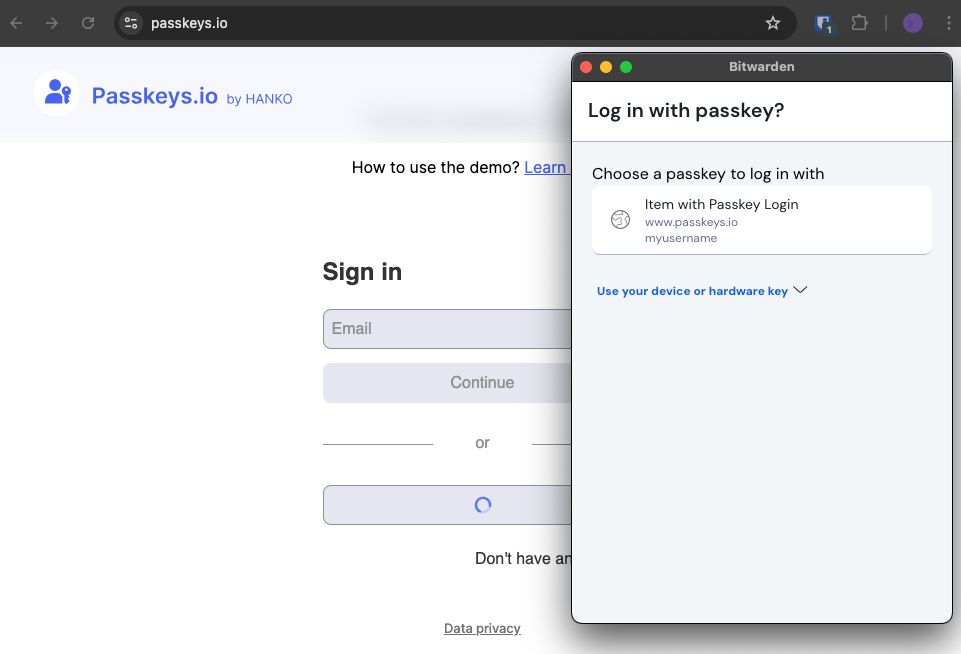
tip
The inline autofill menu can also be used to easily authenticate with passkeys.



